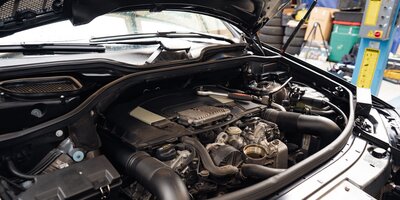What are the functions of motor oil and what does engine oil do
Within the realm of automotive care, few substances are as vital as motor oil, in ensuring the seamless operation of a vehicle's propelling device. It serves as the lifeblood of a motor, ensuring that the intricate machinery operates efficiently and without unnecessary friction. The functions of motor lubricant substance extend far beyond just lubrication, encompassing a range of critical tasks that contribute to the longevity and performance of a propelling mechanism. In this article, we’ll delve into the multifaceted functions of motor oil and explore how it plays a pivotal role in maintaining the health of automotive powerhouses.
What does oil do for an engine
What are the primary functions of motor oil? Going beyond its role as a mere lubricant, engine lubrication emerges as a vital cooling agent, thwarting the accumulation of undue heat amid the engine's intricate parts. Its significance transcends cleaning, as it takes on the mantle of capturing and suspending contaminants, thwarting their detrimental impact. Furthermore, the lubricant designed for engines takes upon itself the duty of establishing a steadfast bond between piston rings and cylinder walls, resulting in the diminishment of friction and an elevation in operational efficiency. The choreography of motor oil's functionalities parallels the intricate harmonies of a symphonic masterpiece, where multifaceted interactions converge flawlessly to fortify engine resilience and attain the pinnacle of performance excellence.
What are the main functions of motor oil
So, what does motor oil do?
Lubrication
At its core, one of the primary functions of oil in an engine is lubrication. Enveloping the diverse kinetic elements within the engine, it forms a shielding veil that curtails friction and diminishes wear. This lubricative embrace guarantees a harmonious functioning of the engine's constituents—be it the pistons, crankshaft, or camshaft—allowing them to seamlessly and optimally engage, devoid of any abrasive collisions.
Cooling
Engine lubricant absorbs some of this heat, helping to regulate the engine's thermal state and avert overheating. By removing heat from friction points, the motor lubricating agent ensures that the propelling device remains within a safe and optimal thermal range.
Cleaning
Another primary function of motor oil is its ability to keep the propelling device clean. Within the composition of motor lubricant reside cleansing agents, meticulously ensnaring and suspending these micro particles, effectively averting their inclination to settle upon pivotal elements. As the lubricating solution courses through the intricate mechanisms of the propelling apparatus, it undertakes the mission of transporting these impurities along, thus ensuring the continued upkeep of a propelling mechanism that remains both cleaner and decidedly more efficient.
Corrosion Protection
Motor lubricating substance acts as a protective layer, guarding against corrosion and rust formation on metal surfaces. It creates a barrier that shields the engine's internal components from moisture and the effects of oxidation. This protection is particularly crucial for engines that might be exposed to varying weather conditions or environments.
Sealing and Compression
Motor lubricating agent contributes to the proper sealing and compression of the engine's cylinders. It forms a film between the piston rings and cylinder walls, preventing gas leakage and maintaining optimal compression ratios.
Sound Dampening
Though often overlooked, motor lubricating substances can also help reduce engine noise. The lubricative embrace it extends acts as a silencer to the collisions between mobile components, effectively tempering vibrations and culminating in an operation that resonates with a hushed cadence.

What is the additional purpose of engine oil
Drive lubricating substance, apart from its primary functions, serves to underscore its pivotal role in propelling device performance and longevity. This revolves around balancing viscosity and flow characteristics, adapting to temperature changes. Cold starts demand quick lubrication, while higher temperatures necessitate adequate viscosity to prevent thinning. This adaptability guarantees engine protection across varied conditions.
Moreover, drive lubricant doubles as a diagnostic tool for motor health. Regular oil changes involve inspecting color and consistency. Deviations or metal particles signal potential issues, prompting timely intervention and prevention of severe damage.
5 functions of BIZOL engine oils
BIZOL engine oils excel in fulfilling a multitude of functions that contribute to motor performance and longevity. These 5 functions of engine oil include:
-
Optimal Lubrication.
-
Thermal Stability.
-
Cleansing Actio.
-
Corrosion Protection.
-
Seal Conditioning.
Incorporating these five functions, BIZOL engine oils go beyond conventional lubrication, elevating engine performance to new heights.
So, what is the purpose of motor oil in your car? It’s not just a fluid; it’s the guardian of your engine’s well-being, ensuring a smooth, efficient, and enduring ride down the open road.

You might also like

The modern marvel of an internal combustion motor powers our vehicles, providing the strength and reliability we rely on for daily transportation. However, just like anything else subjected to constant use, motorized units experience wear and tear over time. Component deterioration can significantly impact performance and longevity. In this article, we will delve into the intricacies of engine wear meaning, explore the various causes behind it, provide actionable tips to reduce and prevent it. Furthermore, we will look at how specialized engine oils, such as BIZOL, play a crucial role in safeguarding your engine’s health. Let’s begin by understanding what engine wear is and the factors that contribute to it.

The melodious purr of a motor, the velvety transition of cog-wheel, and the elegant voyage along the expansive highway — these are the unmistakable characteristics of a meticulously calibrated self-shifting gearbox system. But what transpires when the motorized ensemble falters, the cogs gnash, and the voyage veers into an unforeseen tempest? Get into the realm of automatic transmission problems, a domain where automotive aficionados and everyday motorists alike encounter the enigmatic intricacies of this complex system.

Driving is a blend of exhilaration and convenience, but sometimes, your trusty car can hit a snag. One of the most frustrating issues is a coolant leak.
Coolant, often referred to as the versatile 'antifreeze,' assumes the uncelebrated role of an automotive guardian, ensuring your engine's harmonious operation. This unassuming fluid stands as a bulwark against the scorching summer heat and the bone-chilling cold of winter. Nevertheless, when the vigilance of antifreeze wanes, and it embarks on an unauthorized journey beyond its confines, ominous troubles come into view.

